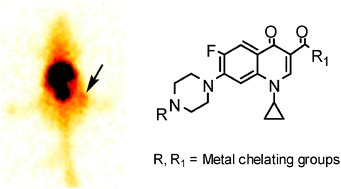Synthesis and evaluation of Ciprofloxacin derivatives as diagnostic tools for bacterial infection by Staphylococcus aureus†
Abstract
Development of target-specific diagnostic radiopharmaceuticals has always been a challenging task. For this purpose, design and development of the imaging-friendly variant of a potent


 Please wait while we load your content...
Please wait while we load your content...